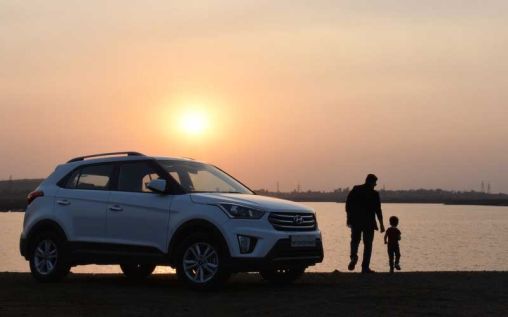Tips in Finding an Affordable Family Car
Posted by admin at 1 January 2021, at 21 : 49 PM

You might be new to the scene of buying a new car, or it might have been several decades after you’ve purchased your last one. If so, it can be challenging to know where you should begin. Know that the process gets more manageable if you do a little planning and research.
Determine your needs, the type that you want, your budget, and the overall purpose of why you’re buying a car in the first place.
Factors to Consider when Buying a Car
1. Assess your Family’s Needs
Each car is different, and the best one should be able to meet you and your family’s needs. Some would want a statement and luxury vehicle to let others know that they are “rich,” and others are more inclined to the retro styles. Others would want loud engines and more horsepower to have spirited drives, and some are more focused on functionality. Before making a purchase, you may want to consider the following:
⦁ The number of passengers that you need to carry
⦁ Your location on whether you’re in a highway, off-road country setting, or surface streets
⦁ Is fuel economy important to you during a long drive?
⦁ Additions of other features like leather seats, backup cameras, blind-spot monitoring, etc.
⦁ Cargo capacity
⦁ If there’s a need to use car seats for the younger members of the family
⦁ The additional space that’s still available in your garage, and more.
2. Setting Up a Budget
The next thing to do is to determine your budget. You may pay in cash or consider in-house financing options. You need to know whether you can make the monthly payments and afford this kind of lifestyle for a few years. The general rule of thumb is that what you’re paying for the car each month should not exceed 15% of your income.
Used cars are more affordable, but the 15% rule applies. Other considerations include fuel costs and insurance. Know your budget and check with an affordability calculator online to see if this is something that you can afford. The prices may change based on the available options, finance fees, taxes, and trim levels, so it’s best to get only the features you need.
3. Deciding to Lease or Buy
Leasing has its advantages and disadvantages. As an example, leasing will require little to zero down payment and lower monthly premiums. However, you will have to shop around for a new vehicle when the lease ends.
On the flip side, buying may be more expensive at the start, and the premiums you’re going to pay will be higher. However, after you’ve paid off everything, you’ll essentially own the vehicle, and you can drive it as long as it’s running. Other factors to know are the following:
About the Leases
⦁ Drive more expensive and luxury vehicles for less than the money required to get them
⦁ An option to change cars with the best features and latest technology upgrades once a year or every few months
⦁ The repairs are often covered with the factory warranty
⦁ No hassle when it comes to trade-in if it’s the end of your lease
Buying
⦁ You’ll have more flexibility, especially if you eventually decide to sell at a later date
⦁ Modifications are available according to your taste
⦁ No mileage penalties, especially if you’re going to drive for long-distances
⦁ The expenses will be lower each month if you decide to keep the vehicle after you’ve paid it off.
4. Consider Other Classes
You may have a specific model in mind, but it’s still best if you’re flexible in getting others. Shoppers are often pleasantly surprised about the more affordable vehicles in the market, where they have more features and power than what they’ve previously preferred. Something in the showrooms that may have never crossed your mind may be the best for you. It’s always best to research and compare, so you’ll know more information about the available ones in the market.
Look for other classes and vehicle types with the help of various platforms and car-finding tools. If you’re planning to do some financing, you may want a dealership that’s near you, so they are whenever you have questions or need help. Once you have a worthy prospect, you may want to ask more about the specifications, pricing, and features.
Check out the top-rated picks from various editors and ratings for a more accurate view of your options.
5. Weigh the Overall Costs of the Entire Ownership
Some vehicles may be cheaper at first glance, but they will become more expensive in the long run. This is because they may depreciate faster, consume more fuel, and require regular maintenance.
Before committing to a car, you might want to estimate the costs for the entire family and whether it’s going to be worth it. The expenses you may face each month may include fuel costs, maintenance, insurance, and depreciation.
These are often termed as the actual cost of the ownership, and they will give you an idea of whether you’ll be saving up thousands of dollars or it will cost more.
6. Finding the Best Deals
There’s the traditional method of visiting various dealerships in person and seeing their available inventories. This is a good idea, but it can be time-consuming. Fortunately, various platforms and online tools today will be able to save you time and money.
You’ll read about the features and see the interior on websites, so you won’t have to drive around town looking for the best cars. Once you have an idea about the ones that you want, you can simply check their price, availability, and financing options so you’ll be more prepared when you go into the dealership.
